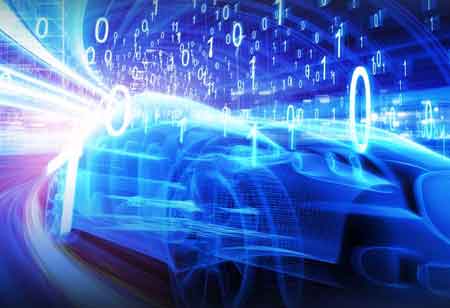THANK YOU FOR SUBSCRIBING
THANK YOU FOR SUBSCRIBING
Be first to read the latest tech news, Industry Leader's Insights, and CIO interviews of medium and large enterprises exclusively from Auto Tech Outlook

By
Auto Tech Outlook | Friday, June 14, 2024
Stay ahead of the industry with exclusive feature stories on the top companies, expert insights and the latest news delivered straight to your inbox. Subscribe today.
The Asia-Pacific region is adopting a hybrid testing approach, combining simulated and real-world scenarios. Trends include high-fidelity simulations, sensor fusion, and staged real-world testing.
FREMONT, CA
The Asia-Pacific (APAC) region is witnessing a rapid surge in technological advancements, particularly in autonomous vehicles, robotics, and medical devices. Testing these innovations requires a delicate balance between efficient, controlled simulated environments and the complexities of real-world scenarios.
Simulated testing employs virtual environments to mimic real-world scenarios, offering several key advantages. It provides efficiency and scalability, allowing millions of test cases to be executed rapidly without physical constraints. This accelerates development cycles and enables the exploration of rare or hazardous situations. Moreover, it is cost-effective, requiring less infrastructure, personnel, and resources than real-world testing. Simulations also offer repeatability and control, with precisely managed variables enabling focused testing on specific product aspects.
However, real-world testing remains indispensable. It validates functionality, ensuring products perform as intended in actual environments. It also helps adapt to unforeseen events, leading to crucial design improvements. Regulatory requirements, particularly in APAC countries like Singapore and Japan, often mandate simulated and real-world testing for product approval.
Manufacturers in the APAC region are increasingly adopting a hybrid approach, integrating both methods to leverage their strengths. Key trends include high-fidelity simulations that closely replicate real-world conditions, narrowing the gap between virtual and physical testing. There is also a focus on sensor fusion, accurately simulating sensor behavior to ensure appropriate product responses in real-world scenarios. Additionally, staged real-world testing is conducted in phases, starting with controlled environments and gradually expanding to more representative locations.
Building on the core concepts of simulated and real-world testing, specific considerations for the APAC region reveal a nuanced approach to technological advancements:
The Rise of AI-powered Testing
Integrating AI into simulations creates more dynamic and unpredictable scenarios, closely mimicking real-world complexities such as human behavior and traffic patterns. This enhances the robustness of the testing environment, pushing products to their limits and uncovering potential issues that static simulations might miss.
Focus on Edge Computing
With the proliferation of Internet of Things (IoT) applications in APAC, testing the performance of devices at the network edge is increasingly crucial. Simulations designed to replicate real-world network conditions, including latency variations and bandwidth limitations, ensure that products function seamlessly in edge environments.
Cybersecurity Concerns
Given that APAC is a prime target for cyberattacks, simulations are essential for testing the security vulnerabilities of products and identifying potential weaknesses before they can be exploited. This proactive approach builds trust and ensures the safety and security of users in the region.
The Future of Testing in APAC
The distinction between simulated and real-world testing is expected to blur further with the emergence of "hardware-in-the-loop" simulations, where fundamental physical components are integrated into virtual environments for more realistic testing. Additionally, the increasing adoption of cloud-based testing platforms will enhance scalability and collaboration, providing manufacturers across APAC access to advanced testing resources. As data privacy regulations become more prominent in the region, ensuring data security within simulated testing environments will become a key focus area.
Striking the optimal balance between simulated and real-world testing is pivotal for success in the APAC market. By leveraging the strengths of both approaches and tailoring them to the region's unique conditions, manufacturers can ensure their products are safe, reliable, and perform flawlessly in real-world applications. As technology continues to advance, testing methodologies will evolve accordingly. The future lies in a continuously refined and integrated approach, maximizing the benefits of simulated and real-world testing.
 Copyright © 2025 AutoTech Outlook. All Rights Reserved | Privacy Policy | Subscribe | Sitemap | About us | Feedback Policy | Editorial Policy
Copyright © 2025 AutoTech Outlook. All Rights Reserved | Privacy Policy | Subscribe | Sitemap | About us | Feedback Policy | Editorial Policy 



